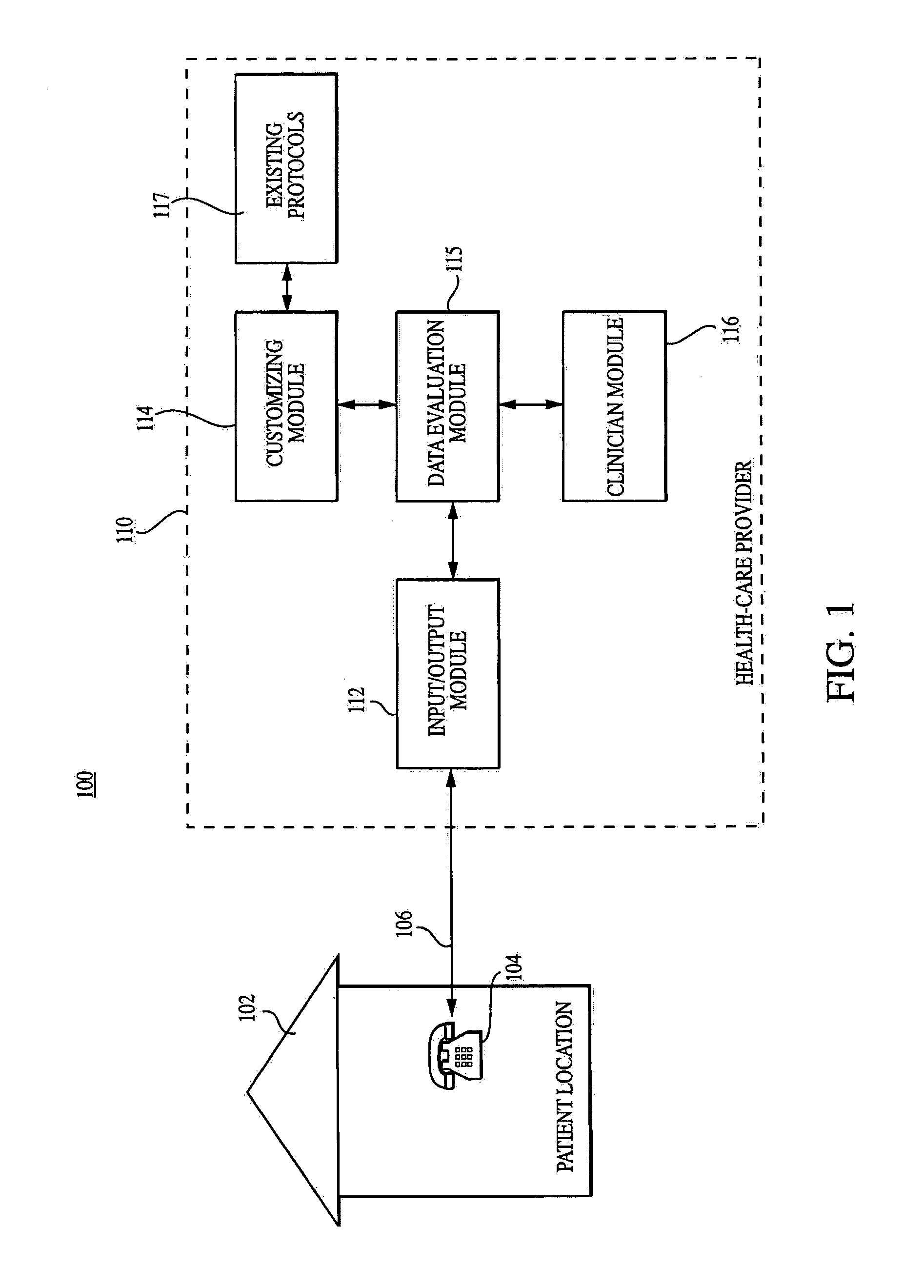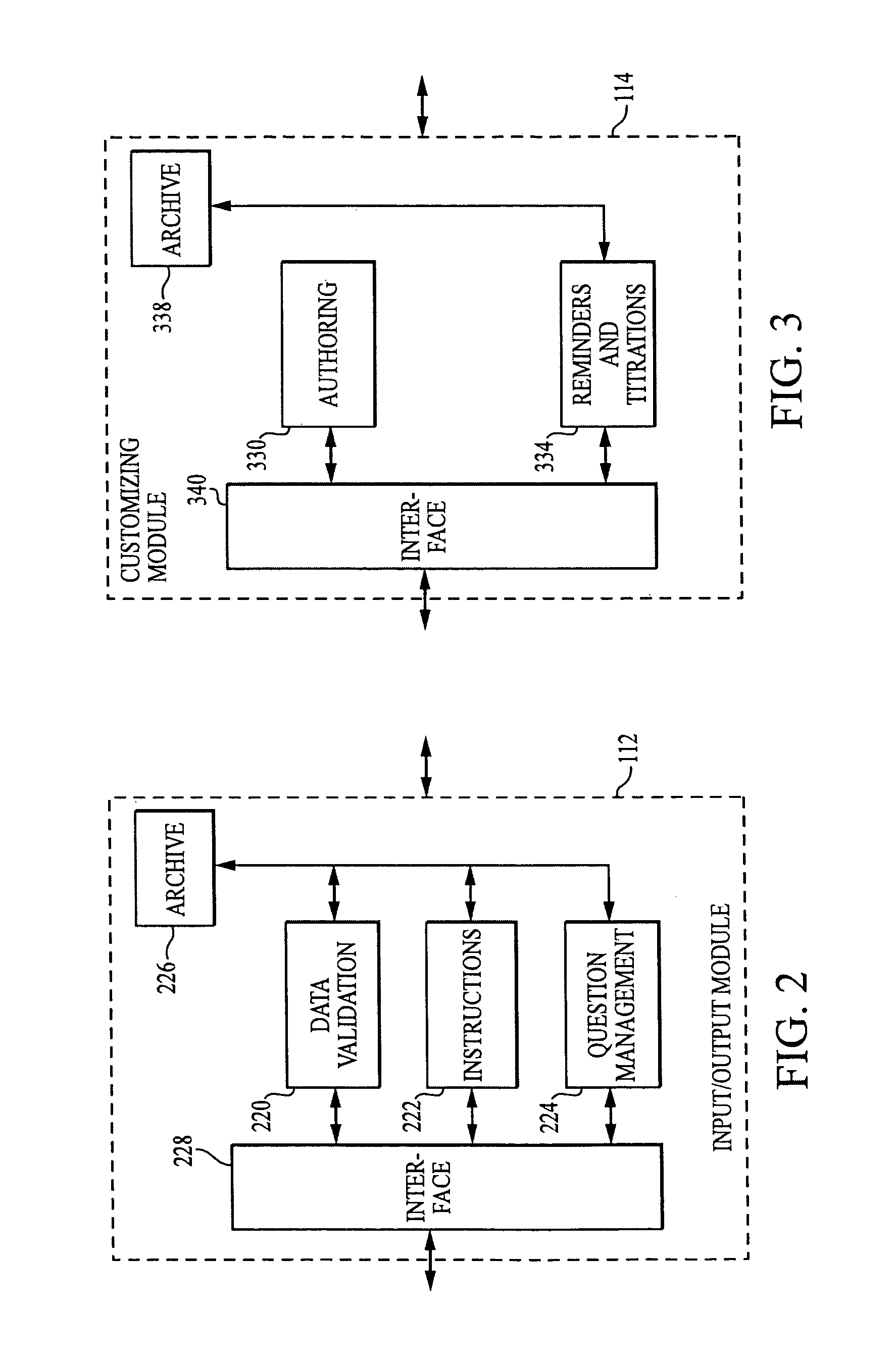Method and system for outpatient monitoring
a monitoring system and outpatient technology, applied in the field of interactive medical monitoring, can solve the problems of difficult to deliver close monitoring to outpatients, inability to long-term hospitalization, and inability to use video-based and store-and-forward-based systems, and achieve the effect of convenient interpretation and access
- Summary
- Abstract
- Description
- Claims
- Application Information
AI Technical Summary
Benefits of technology
Problems solved by technology
Method used
Image
Examples
Embodiment Construction
)
[0020]The following terms and definitions are used throughout the application:
[0021]“Session” means any communication between a user of the system and the system itself; for example, a “communication session” occurs when a patient connects with the health care provider server; “Repeating questions” are questions that are asked during each session;
[0022]“Rotating questions” are a predefined set of questions that are presented to the patient on a rotating basis;
[0023]A “rotating question set” is a subset of questions taken from the rotating questions and presented to a patient such that the same rotating question set is never presented to a patient in sequential sessions. A rotating question set can contain as few as one question from said rotating questions;
[0024]“Condition-specific” questions are questions that are related to a specific medical condition. For example, chronic heart failure patients frequently experience depression; the question “How would you describe your mood tod...
PUM
 Login to View More
Login to View More Abstract
Description
Claims
Application Information
 Login to View More
Login to View More - R&D
- Intellectual Property
- Life Sciences
- Materials
- Tech Scout
- Unparalleled Data Quality
- Higher Quality Content
- 60% Fewer Hallucinations
Browse by: Latest US Patents, China's latest patents, Technical Efficacy Thesaurus, Application Domain, Technology Topic, Popular Technical Reports.
© 2025 PatSnap. All rights reserved.Legal|Privacy policy|Modern Slavery Act Transparency Statement|Sitemap|About US| Contact US: help@patsnap.com



